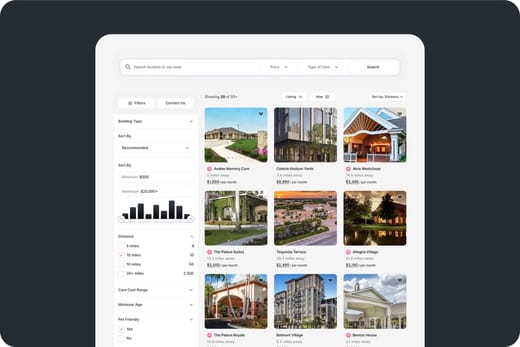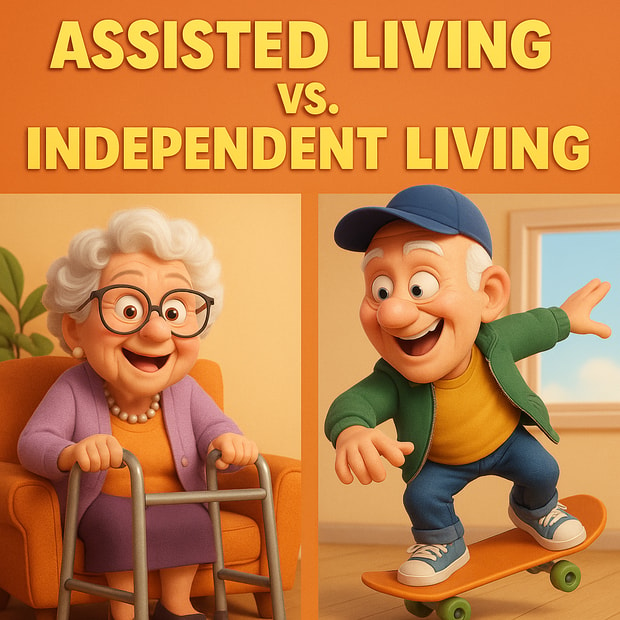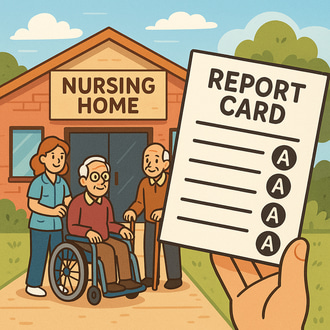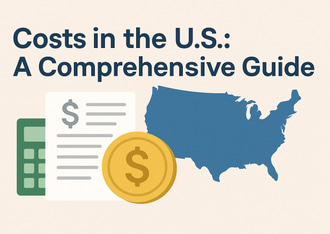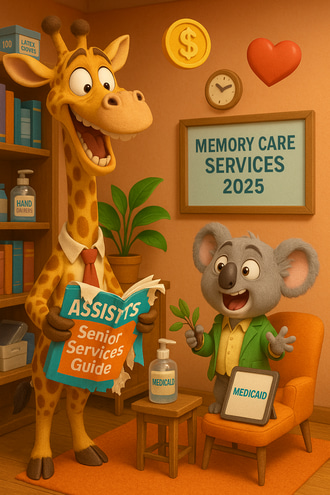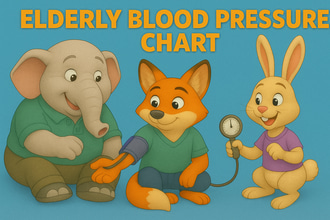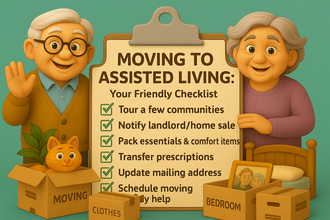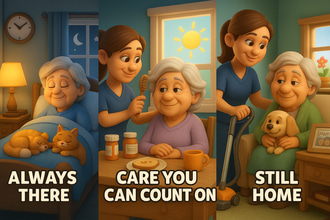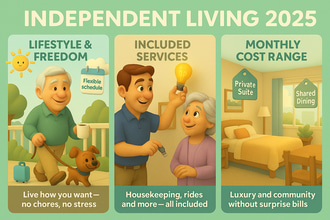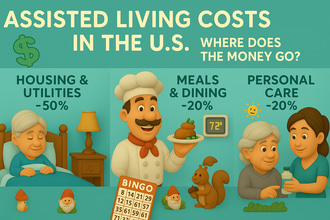Assisted living and independent living cater to different needs and preferences, although both retirement options provide housing, amenities, and a social environment for older adults. Understanding the key differences between assisted living and independent living in terms of the level of care, services provided, costs, resident profile, and environment can be beneficial for long-term care planning. This article explores the key differences, referencing data from the Genworth Cost of Care Survey 2025 and the U.S. Department of Health and Human Services.
Level of Care
- Independent Living
- Caters to older adults who can manage activities of daily living (ADLs) and instrumental ADLs, without any support, and aims to live actively. Independent living does not provide any forms of medical and personal care, and only focuses on comfort and convenience.
- Assisted Living
- Provides assistance to ADLs and instrumental ADLs due to physical limitations and mild cognitive conditions. The National Center for Assisted Living (NCAL) notes that assisted living communities often provide 24/7 support and medication management.
Services
- Independent Living
- Housing – Variety of housing types, including private apartments, cottages, or homes, in variations of studio, one-, and two-bedroom floor plans.
- Maintenance-Free Lifestyle – Housekeeping, landscaping, and repairs are often taken care of.
- Dining – Depending on the community, on-site restaurants might be available or communal dining with meal plans.
- Amenities – Plenty of amenities, depending on the luxury of the community, usually include fitness centers, pools, libraries, activity rooms, and walking trails.
- Activities – Exercise programs, hobby clubs, outings, and social events.
- Transportation – Usually for medical appointments and errands.
- Safety – Most independent living communities provide emergency response systems and a security team.
- Assisted Living
- Personal Care – ADL support includes assistance with bathing, dressing, mobility, and grooming.
- Medical Support – Coordination with attending physicians and healthcare practitioners, medication management, and health monitoring.
- Dining – Accommodate special diets and serve three meals daily.
- Housekeeping and laundry are provided regularly.
- Activities – Recreational programs and social events, highlighting older adults’ interests and strengths.
- Safety – Round-the-clock team, fall prevention, and emergency call systems.
- Specialized Care – NCAL notes that some assisted living communities provide dedicated memory care units.
Cost
- Independent Living
- Average cost – $3,145 per month, amounting to $37,740 per year.
- Range – Costs vary by state and level of luxury, ranging from $1,500 to $10,000 per month.
- Additional Fees – Independent living in CCRCs requires entrance fees of $50,000 to $1,000,000 for future care. Pet fees charge up to $25 to $100 per month, and second-person fees at $800 per month.
- Funding Options – Independent living is not covered by Medicare and Medicaid. However, VA’s Aid and Attendance program may provide financial help of up to $2,300 per month. Long-term care insurance and personal savings can cover independent living expenses.
- Assisted Living
- Average Cost – $5,676 per month or $68,112 per year, which is 80% higher than independent living due to the significant difference in care provided.
- Range: $3,500 to $10,000 per month, varying by state.
- Additional Fees – Community fees are around $1,000 to $5,000 per month, care level fees for extra ADL help cost around $500 to $2,000 per month, and memory care fees may amount to $7,908 monthly.
- Funding Options – Just like independent living, Medicare does not cover assisted living costs. However, Medicaid, through Medicaid waivers, may cover some assisted living expenses without room and board. VA’s Aid and Attendance program provides up to $2,300 per month for eligible veterans, while long-term care insurance and personal savings can cover assisted living expenses.
Resident Profile
- Independent Living
- Cater to older adults, 55 to 75+, who aim to maintain independence and live actively without worries about maintenance. Suitable for those planning to downsize in retirement and ease homeownership burdens.
- Assisted Living
- Ideal for older adults, 75 to 85+, with physical limitations and mild cognitive conditions, who need assistance with ADLs. NCAL notes that residents may have chronic conditions, but do not necessarily need intensive medical care.
Environment and Lifestyle
- Independent Living
- A variety of housing options, including apartment-style amenities, cottages, and resort-style communities with 20 to 200 residents. Typically focuses on promoting socialization and an active lifestyle while respecting older adults’ autonomy.
- Assisted Living
- Promotes a home-like environment and accommodates 20 to 100 residents, with private or semi-private apartments. Communal dining and accessibility features are also provided for socialization and safety. NCAL notes that residents tend to have less autonomy.
Staffing and Training
- Independent Living
- Team includes maintenance, dining, and activity coordinators. According to the U.S. Administration on Aging, independent living does not require caregivers or nurses.
- Assisted Living
- Caregivers provide round-the-clock ADL support and are required to have undergone 8 to 16 hours of training, varying by state regulations. NCAL also notes that assisted living may have nurses or therapists to handle medication management and health monitoring.
Transition and Scalability
- Independent Living
- Independent living in CCRCs provides an easier transition to higher levels of care. However, for standalone communities, residents are required to be independent, and home health care may be hired if needs arise.
- Assisted Living
- Accommodates progressing needs through add-on services, like extra ADL help and memory care. Transition to nursing homes with costs ranging from $9,197 to $10,326 might be necessary for intensive medical care.
Additional Considerations
- Regulation
- Independent Living – The U.S. Administration on Aging notes that independent living communities are often categorized under senior housing, which follows state-specific licensing.
- Assisted Living – According to NCAL, assisted living communities follow stricter standards for care, staffing, and safety.
- Social Environment
- Independent Living – Conducts plenty of activities, ideal for outgoing older adults who are looking to live actively.
- Assisted Living – Activities are tailored to residents’ physical and cognitive limitations and promote a supportive environment.
- Pet Policies
- Both options have pet-friendly communities, with additional fees ranging from $25 to $100 per month and a $500 to $2,000 one-time deposit. However, assisted living may have stricter regulations.
Cost Comparison with Other Care Options
- Memory Care – Focuses on older adults with cognitive conditions and costs around $7,908 per month, which is 40% higher than assisted living.
- Nursing Homes – Have higher rates due to the level of care provided and range from $9,197 to $10,326 per month for semi-private and private rooms.
- 24/7 In-Home Care – Three to four times more expensive than assisted living, ranging from $21,823 to $24,006 per month, and allows aging in place.
Choosing Between Assisted Living and Independent Living
- Choose Independent Living If:
- You can manage all ADLs without any assistance.
- You want to enjoy a maintenance-free lifestyle in resort-like amenities.
- Choose Assisted Living If:
- You need support with ADLs or medication management.
- You have physical and mild cognitive limitations that require round-the-clock support due to safety concerns.
- You need a higher level of care than independent living, as suggested by NCAL.
- Assessment
- Reach out to a care advisor or your attending physician to assess the level of care needed.
- CCRCs
- Ideal for long-term planning and allows quick transition to higher levels of care, since it offers different levels of care.
Conclusion
Independent living is ideal for older adults with full autonomy looking to live a maintenance-free lifestyle and ease the burdens of homeownership, while assisted living caters to older adults who need ADL support and safety monitoring. The base cost of independent living is typically lower than assisted living at $3,145 per month and $5,676 per month for the latter. To choose between independent living and assisted living, it is suggested to evaluate your needs and preferences carefully. For those looking for flexibility and an easier transition to higher levels of care, CCRCs, which provide both options, might be ideal.

